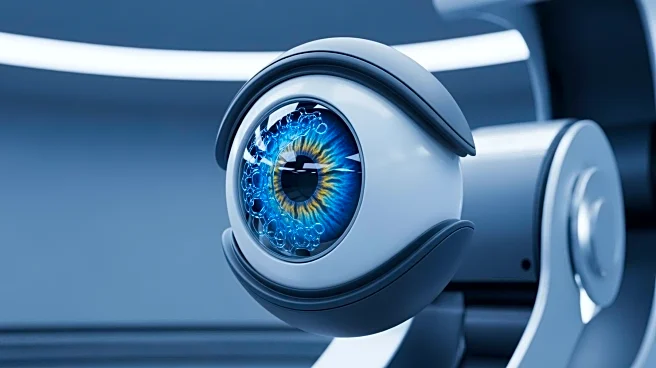What's Happening?
Researchers at Georgia Institute of Technology have developed a squishy robotic eye that can focus automatically without requiring an external power source. This innovative lens, inspired by the human eye, is made from a hydrogel embedded with graphene
oxide particles. The hydrogel responds to light by shrinking and stretching, allowing the lens to focus. This technology could lead to the creation of soft robots with powerful vision capabilities, eliminating the need for traditional electronics and batteries. The lens can distinguish minute details, such as hairs on an ant's leg, and is adaptable to various applications, including wearable technology and autonomous devices for challenging environments.
Why It's Important?
The development of this autonomous robotic eye represents a significant advancement in soft robotics, offering potential applications across multiple industries. By eliminating the need for electronic components, this technology could lead to more sustainable and versatile robotic systems. Industries such as healthcare, environmental monitoring, and manufacturing could benefit from robots that can operate in hazardous or uneven terrains without the constraints of traditional power sources. Additionally, the ability to mimic animal vision could enhance robotic capabilities in detecting camouflaged objects or seeing colors beyond human perception, potentially revolutionizing fields like surveillance and wildlife research.
What's Next?
The researchers are working on integrating the lens into a microfluidic system, which could enable the creation of intelligent, autonomous camera systems powered by light. This integration could further expand the applications of the technology, allowing for more complex and adaptive robotic systems. Future research may explore the potential of the lens to mimic other animal vision capabilities, such as the vertical eye of a cat or the unique retina of a cuttlefish, which could lead to breakthroughs in visual detection and imaging technologies.
Beyond the Headlines
The ethical implications of this technology could be significant, particularly in terms of privacy and surveillance. As robotic systems become more autonomous and capable of detailed visual detection, there may be concerns about their use in monitoring individuals or environments without consent. Additionally, the cultural impact of robots with enhanced vision capabilities could challenge existing norms around human-machine interaction, prompting discussions about the role of robotics in society.














